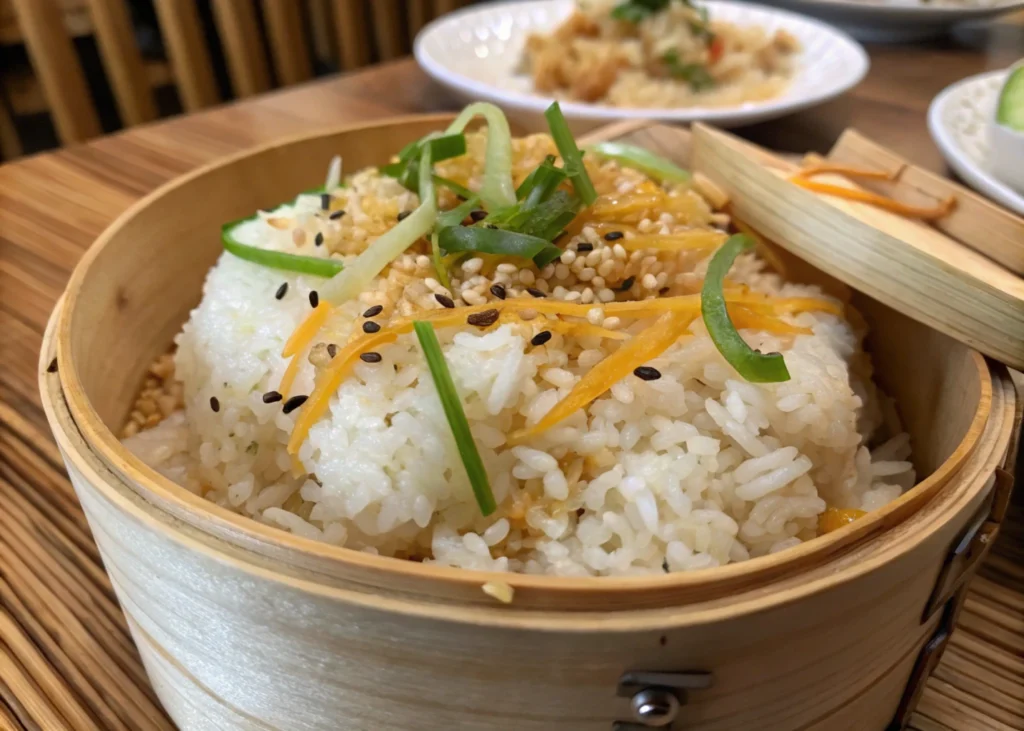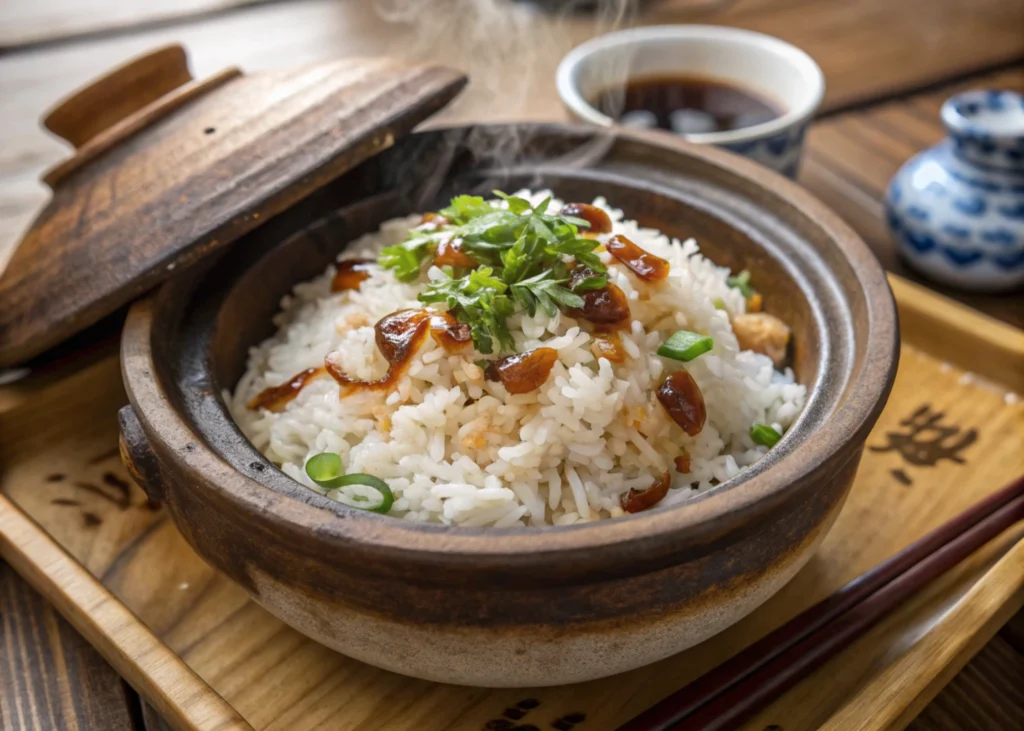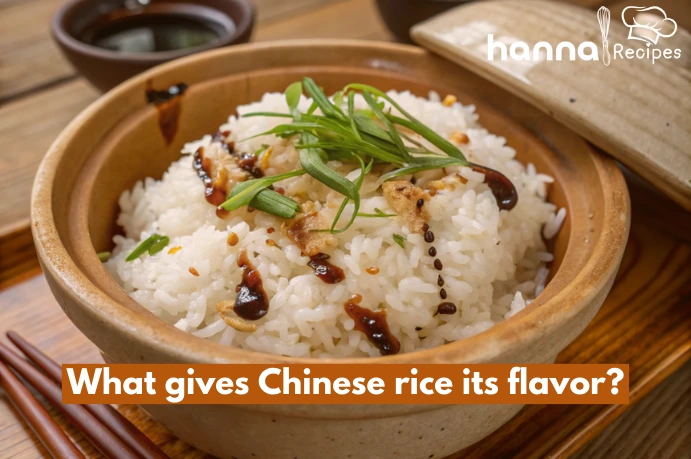Chinese rice is known for its rich and distinctive flavors, which are central to the country’s culinary tradition. Several factors influence its unique taste, including the type of rice, cultivation methods, and the region where it’s grown. From ancient farming techniques to modern innovations, the journey of Chinese rice flavor is fascinating. To understand its flavor, it’s important to explore the rice types, cooking methods, and ingredients that contribute to the authentic taste in Chinese dishes.
The Historical Significance of Chinese Rice
Rice has played a central role in Chinese culture for thousands of years. It is not just a staple food but also a symbol of prosperity and life. Historically, rice cultivation in China dates back over 7,000 years, with ancient methods passed down through generations. The way rice was traditionally grown, harvested, and cooked contributed significantly to its flavor profile.
In ancient China, farmers carefully managed rice fields to ensure the best quality yield, with regions like the Yangtze River Delta being particularly fertile. Over time, cultivation techniques evolved as farmers learned to adapt to different climates and soil conditions. This careful cultivation produced rice varieties with distinct tastes, textures, and aromas that would later define Chinese cuisine. Today, rice remains deeply embedded in the culture, representing harmony and balance in the Chinese culinary tradition.
Rice Varieties Common in Chinese Cuisine
The variety of rice used in Chinese cuisine plays a vital role in what gives Chinese rice its flavor. Different types of rice have unique textures, aromas, and flavors, making them suitable for specific dishes. Among the most popular rice varieties in Chinese cooking are Jasmine rice, glutinous rice, and short-grain rice.
Jasmine Rice: The Aromatic Choice
Jasmine rice is one of the most fragrant rice varieties used in Chinese cooking. This long-grain rice has a delicate floral aroma that is released when cooked. The aroma is subtle yet distinctive, adding a layer of flavor to dishes like stir-fries, steamed rice, or as a side to various meats. Chefs often pair jasmine rice with Cantonese-style dishes, where its fragrance complements the light, fresh flavors of the cuisine.
The texture of Jasmine rice is soft and slightly sticky, making it easy to pick up with chopsticks. It is an ideal choice for dishes that require a fragrant backdrop without overpowering other ingredients. Due to its lightness, Jasmine rice enhances the overall eating experience, contributing to the depth of flavor in the meal.
Glutinous Rice: Texture and Taste
Glutinous rice, also known as sticky rice or sweet rice, plays a significant role in traditional Chinese desserts and savory dishes. What gives Chinese rice its flavor in this case is not just its naturally sticky texture but also the way it absorbs seasonings during cooking. The rice’s high starch content creates a chewy, sticky texture that enhances its ability to hold together and absorb flavors. Understanding what gives Chinese rice its flavor highlights how this unique variety contributes to the distinct taste of many beloved dishes.
Glutinous rice has a subtle sweetness, making it ideal for dishes like zongzi (sticky rice wrapped in leaves), rice cakes, and savory dumplings. In desserts, it pairs with lotus seed paste or red bean paste, creating a satisfying contrast of textures. The rice also absorbs the flavors of fillings and sauces, which is why it’s cherished in Chinese cuisine.
Short-Grain Rice: Versatility
Chefs commonly use short-grain rice in Chinese dishes due to its versatile qualities. It absorbs liquids and flavors well, making it perfect for dishes like congee (rice porridge) or fried rice. Short-grain rice has a higher starch content than long-grain varieties, giving it a sticky, soft texture that allows it to clump together.
Short-grain rice is often used in dishes like fried rice and congee due to its ability to absorb liquids and flavors. Its higher starch content makes it slightly sticky, ensuring that sauces and seasonings cling to each grain. To learn more about how rice varieties enhance Asian cooking, explore the role of rice in Southeast Asian cuisine.

Soil and Climate Influence on Rice Flavor
The soil and climate conditions where rice grows play a crucial role in shaping the flavor of Chinese rice. Although rice is a highly adaptable crop, environmental factors significantly influence its flavor. In regions like the Yangtze River Valley, the fertile soil and warm, humid climate create ideal conditions for growing rice with a delicate, aromatic flavor.
The water quality also impacts the rice, as rice paddies rely on clean, abundant water to grow. The rich, mineral-heavy water found in certain regions can enhance the flavor of rice, contributing to its overall taste. Additionally, regions with cooler climates produce rice that tends to have a firmer texture, while warmer areas yield rice that is softer and more aromatic.
Traditional Cooking Techniques
Chinese cooking methods are integral to what gives Chinese rice its flavor. Techniques such as steaming, boiling, and cooking rice in a clay pot help preserve the rice’s natural qualities while infusing it with additional flavors. These methods are not just about cooking rice but about enhancing the overall dining experience.
Steaming: Retaining Natural Flavor
Steaming is a popular method of cooking rice in China, especially for dishes like jiaozi (dumplings) and bao (steamed buns). The gentle steaming process preserves the rice’s natural flavor and aroma. Unlike boiling, which can cause some flavors to escape, steaming locks in moisture and keeps the rice tender without making it too sticky. This method is ideal for rice that complements delicate dishes, allowing each grain to retain its distinct flavor.
Clay Pot Rice: A Smoky Twist
One of the most distinctive methods of cooking rice in Chinese cuisine is the use of clay pots. Cooking rice in a clay pot imparts a unique, smoky flavor that enhances the overall taste of the dish. The slow cooking process ensures that the rice absorbs the flavors of the ingredients, creating a rich, savory taste. Clay pot rice dishes, such as clay pot chicken rice or clay pot pork rice, are popular for their deep, comforting flavors.
The porous nature of the clay helps regulate heat and moisture, ensuring even cooking while allowing the rice to take on a slight smokiness from the pot. This method is a favorite in regions like Guangdong, where it is used to create hearty, flavorful rice dishes.
Flavor Enhancers Used in Chinese Cooking
What gives Chinese rice its flavor is not only the type of rice or cooking method but also the ingredients used to season it. Chinese cuisine incorporates a wide range of flavor enhancers, including soy sauce, ginger, scallions, and garlic. These ingredients are often added to rice dishes to complement the rice’s subtle flavors and create a balanced dish.
Soy Sauce: Depth and Umami
Soy sauce is one of the most common seasonings in Chinese rice dishes. Its rich, salty flavor adds depth and umami, enhancing the natural taste of the rice. Chinese cooks use two main types of soy sauce: light soy sauce and dark soy sauce. They typically use light soy sauce for seasoning and adding saltiness, while dark soy sauce provides a deep color and richer flavor.
The combination of these two types of soy sauce in rice dishes like fried rice or chow mein creates a harmonious balance of salty, savory, and slightly sweet flavors.
Aromatics: Ginger and Scallions
Ginger and scallions are essential ingredients in Chinese cuisine, shaping the flavor of rice dishes. Ginger adds a sharp, spicy kick, while scallions provide a mild, refreshing taste. Together, they create a balanced combination of sharpness and sweetness that complements the subtle taste of rice. In dishes like fried rice or rice congee, ginger and scallions are often sautéed to release their oils, infusing the rice with their distinct flavors.

The Role of Fermentation in Flavor
Fermented ingredients like black bean sauce, rice wine, and vinegar are often used in Chinese rice dishes to enhance the overall flavor. These fermented products bring complexity and depth, adding tang, saltiness, and a hint of sweetness.
Black bean sauce, for example, is often used in savory rice dishes to provide a rich, earthy flavor. Rice wine, on the other hand, imparts a slight sweetness and enhances the savory qualities of dishes like drunken chicken rice. These fermented ingredients work in harmony with the rice, creating a more nuanced and flavorful dish.
Modern Innovations in Chinese Rice Cooking
Electric rice cookers and modern kitchen gadgets have made cooking Chinese rice more convenient without losing its flavor. These innovations simplify the process of preparing perfectly cooked rice with minimal effort. Moreover, the fusion of traditional Chinese flavors with modern techniques has inspired new rice dishes that blend cultures and tastes.
Electric rice cookers ensure that rice cooks consistently to perfection, while fusion flavors bring new twists to traditional dishes, making them more diverse and exciting. These modern innovations continue to shape the flavor of Chinese rice, offering both convenience and creativity in the kitchen.
Health Benefits of Chinese Rice Varieties
Different types of rice used in Chinese cuisine come with their own unique nutritional profiles. Brown rice, for example, is a whole grain that contains more fiber and nutrients compared to white rice. It also has a chewier texture and a slightly nutty flavor, making it a healthier option for those looking to reduce their calorie intake.
Brown Rice vs. White Rice in Chinese Cuisine
Brown rice retains its bran and germ layers, providing essential vitamins and minerals. Its higher fiber content makes it a better choice for digestion and long-term health. In contrast, white rice is polished and has a softer texture, making it ideal for dishes like fried rice and congee. While both types are common in Chinese cuisine, chefs are increasingly incorporating brown rice into modern dishes for its health benefits.
Regional Variations in Chinese Rice Dishes
Chinese rice dishes vary significantly from region to region, with each area incorporating local ingredients and flavors. Cantonese, Sichuan, and Fujian styles all offer unique takes on rice, providing a wide range of tastes and textures.
In Cantonese cuisine, cooks often steam rice and serve it alongside delicate stir-fries and seafood, highlighting the rice’s subtle flavor. In Sichuan cuisine, chefs use rice as a base for bold, spicy dishes, allowing the rice to absorb the heat and spices. Fujian-style rice is known for its use of seafood and savory broths, creating a rich, flavorful dish.
Popular Chinese Rice Dishes
People around the world love Chinese rice dishes, which offer a variety of tastes and textures. Dishes like fried rice, congee, and zongzi showcase the versatility of rice in Chinese cooking.
Fried Rice: A Symphony of Flavors
Fried rice is a classic Chinese dish where cooks stir-fry the rice with ingredients like vegetables, meat, and soy sauce. The rice absorbs the flavors of the ingredients, creating a harmonious dish. The key to great fried rice lies in the rice’s texture, which should be firm yet slightly sticky to hold up to the stir-frying process.
Congee: Comfort in a Bowl
Congee is a comforting rice porridge often served for breakfast or as a light meal. It can be sweet or savory, depending on the toppings. Savory congee may include pickled vegetables, meats, or century eggs, while sweet versions use ingredients like sugar and coconut milk.
Zongzi: Tradition Wrapped in Leaves
Zongzi are sticky rice dumplings wrapped in bamboo leaves, typically filled with sweet or savory ingredients. Cooks steam the rice with the filling, creating a fragrant and flavorful dish that people enjoy during festivals and special occasions.
How to Choose the Right Rice for Your Dish
Choosing the right type of rice is essential to achieving the desired flavor and texture for your dish. For lighter, aromatic dishes, Jasmine rice is an excellent choice. For sticky rice dishes like zongzi or rice cakes, glutinous rice is the preferred option. Short-grain rice works well in dishes like fried rice and congee, where the rice needs to absorb flavors and hold together.
Cooking Tips for Authentic Chinese Rice
To cook authentic Chinese rice, it is essential to rinse the rice thoroughly to remove excess starch. Soaking the rice for 30 minutes before cooking helps ensure a fluffy texture. Additionally, the proper water-to-rice ratio is key to achieving the perfect rice. Typically, a ratio of 1:1.5 (rice to water) works well for most types of Chinese rice.
Frequently Asked Questions
What gives Chinese rice its flavor?
Chinese rice derives its flavor from the variety used, the cooking methods, and the seasonings like soy sauce, ginger, and garlic that cooks commonly add during preparation.
Can you use other types of rice for Chinese dishes?
Chefs commonly use Jasmine, glutinous, and short-grain rice, but they can also use other types of rice for different dishes, though these may alter the flavor and texture.
Conclusion
The flavor of Chinese rice comes from a combination of factors, including the type of rice, cultivation methods, cooking techniques, and ingredients used to enhance the dish. Each region and dish brings something unique, highlighting the versatility and rich tradition of Chinese rice. By understanding these elements, you can better appreciate the depth and complexity that make Chinese rice so flavorful and essential to Chinese cuisine.


1 thought on “What gives Chinese rice its flavor?”
Comments are closed.